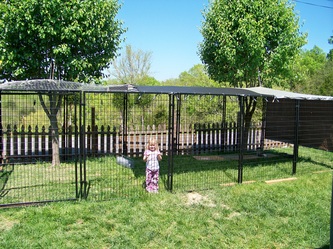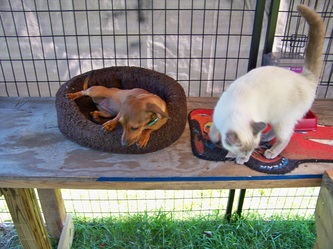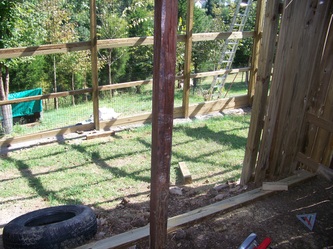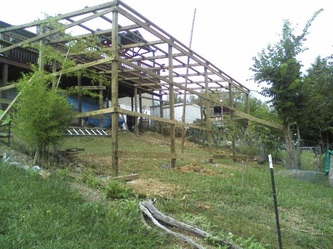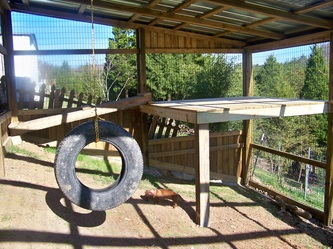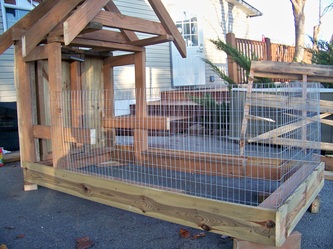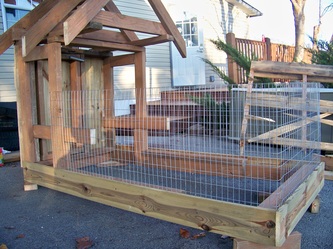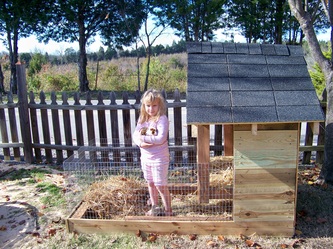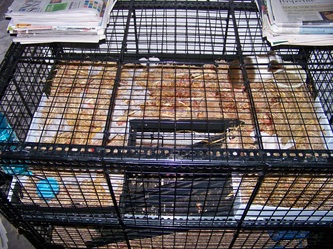Loading
DIY for Pet Owners
DIY for pet owners is not only caging and feeding, but caring for and providing the essentials pets need for their time as part of your family and fulfilling the responsibilities of being a full time pet owner. I've been a pet owner my entire life and as many pet enthusiast before me, started small and worked my way up. I love creating terrariums and unique aquarium designs. I have walked through many stores looking at what would be used in other applications figuring out how it could become part of my pet’s habitat. Pets enter your life and exit just as quick, but it shouldn’t be the result of laziness or mistreatment. Your knowledge and understanding of pets should be clear and pet owners should make a commitment from the start to be willing to do whatever it takes to provide a safe living environment and stable care for all animals. On this page I describe my adventures as a DIY pet owner and the products and methods that have worked in my home over the years.
Cat CagesCats are the most abundant pet and if you ever let your female cat roam unfixed you probably already know. House cats are easy to care for and usually good tempered. Commonly kept in the house, I like to have mine outside without worry of roaming or getting hit by cars. Cats are predators that hunt and kill almost anything it can catch which is another good reason people should have their cats contained at night and collared with a bell. I have seen many cat enclosures and some are not cheap. I used dog kennels becuase multiple units connect easily and offer friendly designs that anyone can construct. I put mine around trees so they had natural cover and used three kennels for space. I used weld wire over the top and fastened it together with hognose clamps. Finally I took scrap lumber and made a tree in the middle to hold up the top since most kennels are rather short considering it's meant for a dog that can jump six feet. (go figure) I also used old stairs to make a shelf off the ground for their bed and food. I used a kennel cover to shade the center and a heavy duty tarp to keep the back side dry. There is a litter box in the cage, but they stopped using it entirely (another plus to an outside cage). This cage has worked great for years now and people stop to see what's in it. This is a great way to keep cats from shedding in the house and scratching doors and walls. When I was younger we had many cats and we kept them on a screened in porch that we covered the windows with plexi to help with cold, even had a bed. Most of the grass in gone now so I put fresh mulch in there when needed to bury and put patio carpet from on all the structures to scratch.
|
Large Enclosures for Cats or MammalsWe breed Canadian Lynx and from the start I wanted to have a large enclosure that would provide the best possible housing from the elements and people while providing accessibility and function for us and the cats. I spared no expense as they say (Jurassic Park) in materials and labor insuring a quality cage. The cage is placed in a pen where I had raised rabbits before. My plan was a cage inside a cage and that is exactly what I have. From the start I spent a lot of time searching for PVC coated wire, because cats and other animals have strong urine that will eat through cheap fencing. After hours of research, I purchased four rolls of black PVC coated 2”x 4” by 6’ x 400’ total wire from C E Sheppard in TX for about a $1020 shipped. It’s costly, but I love the look of this wire and it has no sign of age in three years other than where a dog chewed through the coating on the door. I did have a contractor help me build this to make sure the corners where straight to each other and the porch since I incorporated in the bottom of the deck. I mixed a ton of cement and poured a pad at the top for the Lynx’s house, food and water and a place we could be without any mud as well as between the cage and outside fence to keep out grass and prevent erosion and made a walkway across the back for the same reason. Cement was used in several applications on this cage including setting all the post, along the inside to prevent digging and around it for walkways and weeds. I decided to use deck boards for the sides to prevent waste cutting wire while improving the look. Next, I put 1x4 and 1x6 face boards along all the outside edges to cover the fence staples that held the wire in and the cut boards so they wouldn’t come loose. I covered one side with barn tin for a roof as well as the housing area and made a deck with a cat walk for additional living space and dry area. Finally I planted bamboo around the entire outside cage for shade and privacy and I have a camera on the inside and on the outside. I eventually got tired of the mud on the walk to the cage and made the rock path and flower beds on the backside. My only other plan is to have steps from the back door to the cage. There is too much detail to cover in this note, but the wire alone took time hang without having any loose or uneven spots. I hope this can be a guide to thought and design so you can provide the best caging for your pets.
|
Guinea Pig or Small Mammal CagesI've had every type of small mammal there is and when it comes to rodents cage requirements are basic but important. All hamsters, rats, gerbils, etc. will burrow, dig and chew so cages need to have a good bottom that can't be easy to chew through. Holes should be no larger than a 1/2 inch unless caging guinea pigs or larger like chinchillas or rabbits, because hamsters and gerbils can squeeze through anything. Pet stores offer a small variety of cages for small animals, but most lack space and character so I like to build my cages with basic supplies from the hardware store. It may cost a little more than the plastic cage at the pet store, but some of the benefits for me are worth it. I’ve purchased cages on EBay that are nothing more than office panels and zip ties. They cost about $200 and will take time and careful detail to instructions. The result is a decent looking cage with coroplast floors that the guinea pigs will chew up and somewhat wobbly cage no matter how tight the ties or detail oriented you are. They provide good space, but were not what I expected for the cost. I beefed up my cage with corner braces and bars and changed the design to a larger one off the floor. I also made an outside cage with a roof and second level that they could use on warmer days. Using treated lumber from an old deck and cage wire it turned out to be a nice alternate cage. hanging rabbit feeders work great for food and a good water bottle that doesn't leak is important.
|
|
Veterinary Secrets Revealed
Treat Your Pet At Home With Over 1000 At-home Pet Health Remedies: Keep Your Dog Or Cat Healthy, Extend Their Life And Save Money At The Vet! Click Here!
|
How To Make $250 A Day Pet Sitting!
Best Product Available For This New White Hot Business Opportunity. Free Gift Plus Huge Bonus Package Including Business Forms, Contract, Pet First Aid, Legal Guide & More! Buyers Get Continuous Email Support, Free Newsletter. Low Start Up - Huge Profits!Click Here! If you ever wanted to make money being a pet sitter and have a fenced in yard or basement that could be making you money. You should read this book which teachs you how to make real money pet sitting at home.
|



